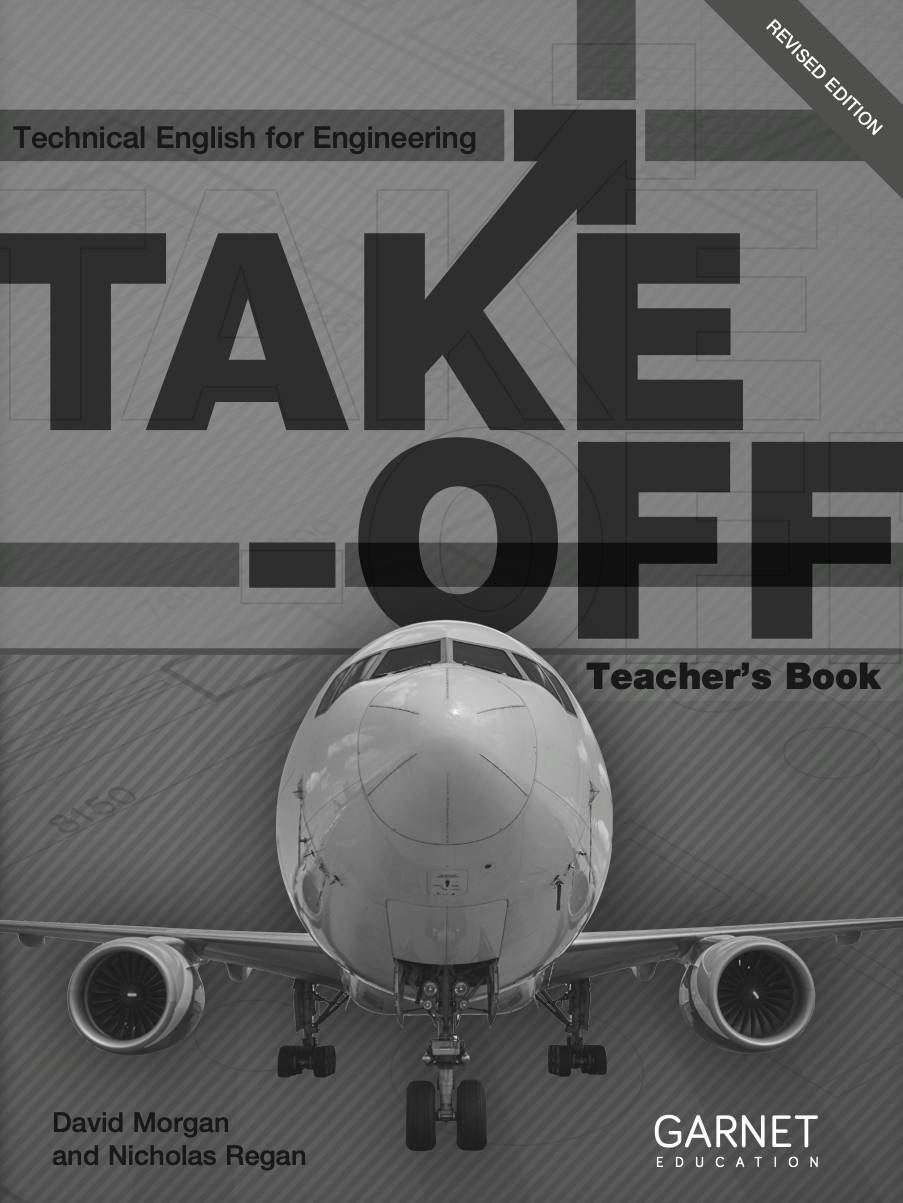About the book
Take-Off: Technical English for Engineering Teacher’s Book
Take-Off has been designed for non-native speakers of English who are studying Engineering (NVQ Level 2 and above. The aeronautical context is particularly aimed at technicians and engineers who are going on to work in the aeronautics industry.
Take-Off is an ESP course for intermediate-level students. Unlike many ESP courses, it teaches genuine transferable skills and is ideal for students who need to further their technical training in English. The focus is on skills development, using relevant contexts, with grammar taking a strong supporting role.
Reading and listening development is dealt with in the context of understanding instructions and information in technical manuals. Students develop the speaking skills of asking for and giving factual information, and the writing skills necessary to complete workplace documentation, such as accident reports and safety assessments.
Take-Off uses a communicative methodology, with graded tasks that are careful scaffolded to involve and motivate the students, providing them with a clear sense of achievement. The wide variety of texts and task types will appeal to a broad range of ages and nationalities.
There are also comprehensive word lists and a glossary of terms for student reference.
A bank of tests are provided online. Please contact us if you have purchased the book and would like access to these tests.
Key Features
- Practical skills developed for dealing with oral and written instructions and documentation
- Task-based approach ensures achievable lesson outcomes
- Variety of texts and tasks on a wide range of aeronautical topics
- Two review sections to consolidate skills and vocabulary knowledge
- Glossary and electrical appendix
Accompanying Course Book and Workbook also available.
Contents
Book map
Introduction
Unit 1: Design and innovation
Unit 2: Manufacturing techniques
Unit 3: Frameworks
Unit 4: Control systems
Unit 5: Engine and fuel systems
Unit 6: Review I
Unit 7: Safety and emergency
Unit 8: Air and gas
Unit 9: Electrical systems
Unit 10: Communication
Unit 11: Maintenance
Unit 12: Review II
Glossary
Electrical symbols
Word lists:
Unit by unit
Alphabetical
Tapescript
Reviews
"The twelve chapters - sometimes with an aeronautical industry slant - are more than sufficient to form a useful, comprehensive and certainly interesting all-round course, or just to dip into as needed."
- Richard Tily, Sprachkom, Germany
"Take-Off is an absolute must-have for any teacher of technical English for Engineering."
- The Journal of Teaching English for Specific and Academic Purposes, Vol. 1, No 1, 2013
"Take-off: Technical English for Engineering describes itself as an ESP course for intermediate-level students. It is particularly aimed at 'technicians and engineers who are going on to work in the aeronautics industry' but would also be useful for anyone heading in the mechanical engineering direction. Students heading for civil, chemical and electrical engineering, however, may well be turned off by the aeronautical examples and the strong mechanical bias. The text is also based on the premise that English teachers may have little or no technical background knowledge of engineering, so authentic texts have been modified to make them more accessible, and tasks are designed to focus on language development, not technical understanding. As a core text for students entering the aeronautics industry it works well, having a strong practical emphasis and a clear goal of enabling students to function well in the training and work environment. Since listening is a critical skill for maintenance crew members, for example, there is a higher proportion of listening exercises than one would expect in a more general course book. The recordings introduce a number of regional English accents and some Australian and American accents, and the exercises for training students in listening strategies are well thought out. The reading and writing exercises are similarly well balanced, seeking to enable students to deal with texts that will be required in the workplace. The reading texts, for example, have a heavy focus on extracting data from dense technical texts, interpreting diagrams and labeled drawings, and working with bullet-pointed manual instructions, whilst the writing tasks include transferring data from listening text to pictures, from diagrams to instructions and filling in forms. The teacher's book and workbook are well-structured, and the teacher should be confidence that answers are comprehensively supplied, with explanation if necessary. The workbook provides welcome extra practice, and is clearly linked back to the course book. The glossary, word list and electrical symbols list at the back of the course book are a useful addition. Since we do not have students who are seeking to enter the aeronautics industry, but we do prepare students for entry into undergraduate and postgraduate engineering and physics programmes, we were interested to see whether we could use parts of this course to supplement our current texts and to expand our range of readings to suit the more technically-minded of our students. Texts of a suitable level on purely scientific matters can be difficult to find, and are a welcome addition to a portfolio of texts with an arts/commerce/environmental focus. Whilst this course is necessarily very rich in technical language, we nevertheless found a number of lessons - which were sufficiently general in terms of vocabulary to be relevant and useful to all students - on subjects such as robots, the power of water, skeletons, etc. and which could be easily exploited in the EAP classroom. All in all, whilst this text does have a limited audience, it is nevertheless one that we will find useful to keep on our shelf."
- Laura Hasely, in consultation with Peter Reynolds and Dr Alison Adams, Bridging Programmes, University



